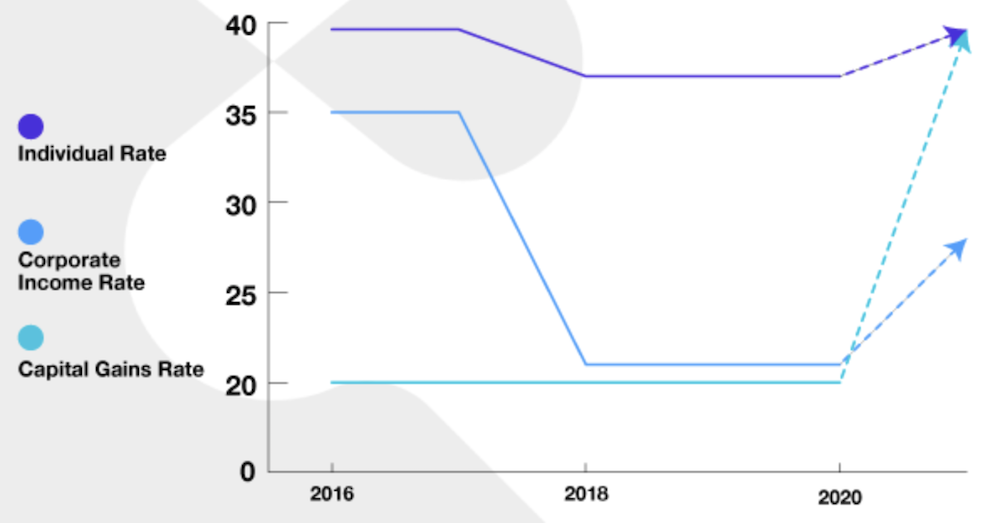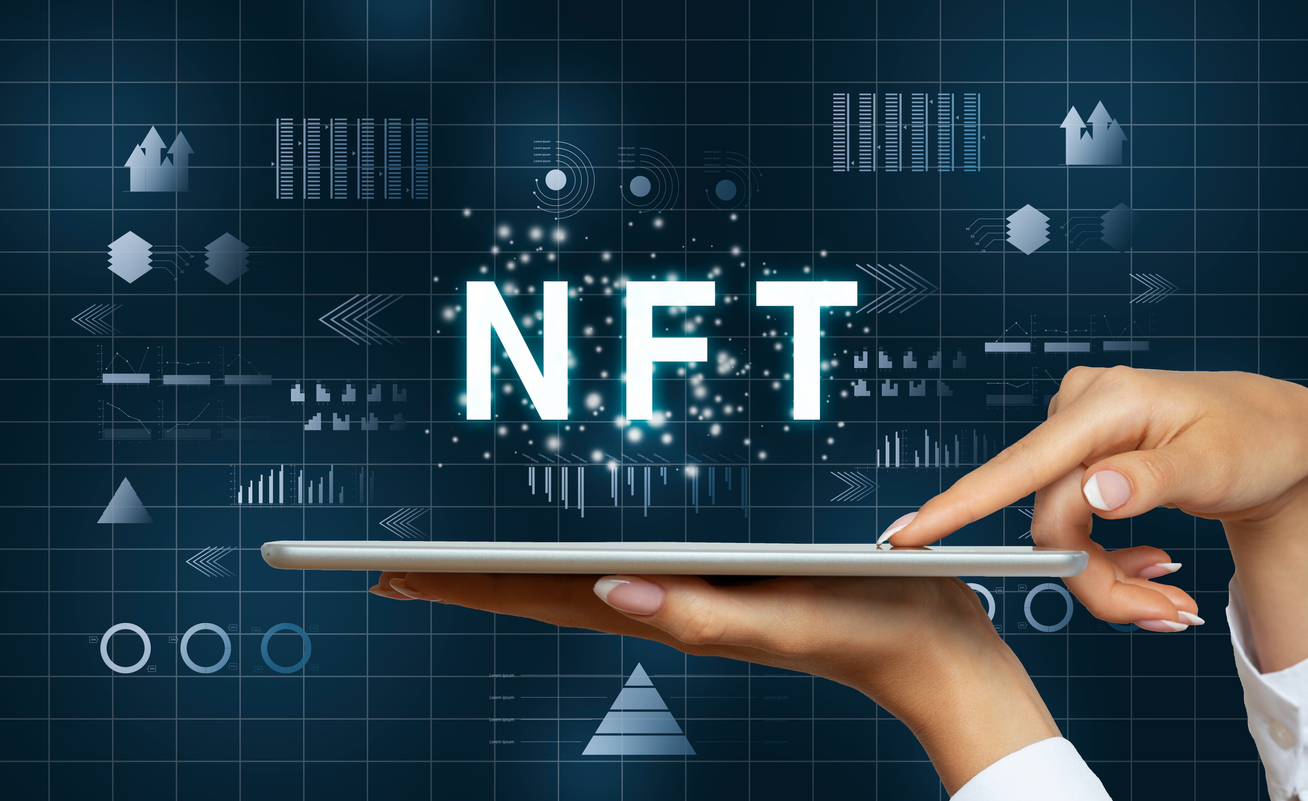
Every Season is Tax Season.
With the 2021 tax filing season just a few months away from starting, we still do not know how the tax law will change under the various proposals being considered. What we do know is that it is always prudent to discuss the potential changes in tax law with us or your tax advisor well before year-end to ensure that you take advantage of tax planning opportunities before it is too late. For instance, California has issued guidance related to AB150, the workaround to the $10,000 state tax deduction, take a look and see if and how you may qualify.
Further, the IRS is warning taxpayers to be on the lookout for signs that your identity has been stolen. This month’s newsletter alerts you to some of the common signs of identity theft and what you can do if you discover that you’re an identity theft victim. Also in this month’s edition, learn about a bank secret that can be yours, the story of a Tweet worth $2.9 million, and continuing IRS backlogs.
Please call if you would like to discuss how this information could impact your situation. If you know someone who could benefit from this newsletter, feel free to send it to them.
Best regards,
Steve Moskowitz
Founding Partner, Moskowitz LLP
Upcoming Dates
October 15
- Filing deadline for extended 2020 individual and C corporation tax returns
October 31
- Halloween
In This Issue
- California news: New Law Creates Workaround for current $10,000 limitation on deduction for state and local taxes paid
- 2021 Tax Planning Time
- Give yourself the Gift of Accounting
- Bank Secrets: Know the way loans work
- The Tweet worth 2.9M: What you need to know about NFTs!
- IRS Backlog of Historical Proportions
- Steve’s Recent Podcasts and Webinars.

California News: New Law Creates Workaround for Current $10,000 Limitation on Deduction for State and Local Taxes Paid
Governor Newsom signed California Assembly Bill 150 into law on July 16, 2021, which created a workaround for the current $10,000 limitation on the deduction for state and local taxes paid for individuals established by the Tax Cuts and Jobs Act (TCJA). AB150 creates an elective tax that allows the taxes on pass-through income to be paid at the entity level. This new law allows certain pass-through entities to annually elect to pay an elective tax in the amount of 9.3% of the pro-rata share or distributive share of the entity’s partners, shareholders, or members. The partners, shareholders and members then receive a tax credit equal to that amount. The law is effective for taxable years beginning on or after January 1, 2021, and before January 1, 2026.
The pass-through entities that can elect to pay this tax are S-corporations, general partnerships, limited liability companies taxed as partnerships, limited liability partnerships or limited partnerships. To qualify to make this election, the pass-through entity’s owners must consist solely of individuals, fiduciaries, trusts, estates or entities taxable as corporations. The pass-through entity cannot have a partnership as an owner, cannot be a publicly traded partnership, and the pass-through entity cannot be permitted or required to be in a combined reporting group.
The pass-through entity will pay tax at a rate of 9.3% on the total of each consenting owner’s pro-rata or distributive share of income subject to California personal income tax (beginning at RTC section 17001). The election to pay the tax must be made on the entity’s original, timely-filed return and is irrevocable for the taxable year.
Partners, members and shareholders who consented to the pass-through entity making the election are allowed a credit equal to 9.3% of tax paid on their pro-rata or distributive share of the entity’s income. If the credit exceeds the tax due, any unused credit maybe carried forward for 5 years or until exhausted. A partner, shareholder or member that does not consent does not disqualify the entity from making the election to pay the tax, however all partners, shareholders, and members of the entity are bound by the entity’s election.
For taxable years beginning on or after January 1, 2021, and before January 1, 2022, the tax must be paid on or before the due date of the original return of the electing pass-through entity, without regard to any extension of time for filing a return for the taxable year of election. For calendar year filers, the 2021 due date is March 15, 2022.
For each taxable year beginning on or after January 1, 2022, and before January 1, 2026 the pass-through entity must pay on or before June 15th of the taxable year of the election, the greater of:
- 50% of the elective tax paid the previous year, or
- $1,000.
On or before the original due date of the tax return, the pass-through entity is required to pay the elective tax due less the amount paid on or before June 15th of the taxable year of the election. For the election to be valid, the pass-through entity must make timely payment.
Will Making an Election Under AB150 Benefit You?
Determining whether or not to make this election can be complicated — based on where your entity is doing business and the location of the owners. Moskowitz LLP can assist with questions on how the calculation works and whether or not this election could be beneficial for you. Please schedule an appointment with us to discuss how this State and Local Tax limitation work around may work for you.

2021 Tax Planning Time:
Now is the time to schedule a tax planning appointment. If you are on the fence, here are some things to consider:
Potential tax increases are happening at many levels:
- 28% C Corp Rate
- 39.6% Top Individual Rate
- 39.6% Capital Gains Rate
- $400k+ Social Security Tax
- $400k+QBID Phase Out
Here’s a good way to visualize just some of what could happen:

2021 Tax Planning Strategies
There are many tax planning strategies that can save your clients money, but what are some of the most basic ones?
One of the more popular tax planning strategies that can provide a huge impact is retirement planning. A good tax plan should go through and confirm that the client’s retirement plan is the most appropriate one for their situation, whether it’s a 401(k), IRA or SEP.
High net worth individuals fortunately have more opportunities for tax planning than most average W-2 wage earners. When working with these types of clients, we analyze their specific situation.
For example, a client with $1M of wage income is most likely going to have investments. For this client, we would want to make sure they are maximizing investment expenses and minimizing investment income tax.
Additionally, clients who invest heavily in securities most likely have the opportunity to take advantage of tax loss harvesting and 83(b) elections. Timing is important. Harvest gains if tax rates are going to be higher in the future and delay losses to offset taxes once rates rise.
2021 Business Tax Planning Strategies
While there are tax savings strategies available to individual clients, there are also a multitude of strategies available to business owners. When considering your business clients, here are some popular business tax planning strategies you can be using as we approach year end tax planning for 2021:
- Emergency Sick Leave Credit
- Family and Medical Leave Credit
- FFCRA Health Insurance Credit
- 100% Deductible Meals
- Employee Retention Tax Credit Section
- 139 Disaster Relief Entity optimization
Moskowitz LLP can offer you a free report to analyze your potential tax planning opportunities.
Please contact Steve to discuss today.

The Gift of Automating Your Accounting:
This year, give yourself the gift of automating your accounting team.
Let us show you how.
Though it is natural for businesses to focus on profit-making and operations, the importance of a sound accounting foundation to support operations cannot be overemphasized. The more diligent and meticulous your accounting team is, the more easily the rest of the organization can function and grow.
Let the Moskowitz LLP accounting practice team get your books and records organized so that you have a solid foundation for 2022. We will get your accounting in order and establish a predictable monthly routine that enables you to stay on top of everything. Having a clean start really pays for itself. See our recent blog post for more information.
If you are in need of an accounting clean up, feel free to reach out to our office for details on how we can set up you for success.

IRS Warns of Identity Theft Signs
With identity thieves continuing to target the tax community, the IRS is urging you to learn the new signs of identity theft so you can quickly react to limit any damage.
The Common Signs of ID Theft
Here are some of the common signs of identity theft according to the IRS:
- In early 2022, you receive a refund before filing your 2021 tax return.
- You receive a tax transcript you didn’t request from the IRS.
- A notice that someone created an IRS online account without your consent.
- You find out that more than one tax return was filed using your Social Security Number.
- You receive tax documents from an employer you do not know.
Other signs of identity theft include:
- Unexplained withdrawals on bank statements.
- Mysterious credit card charges.
- Your credit report shows accounts you didn’t open.
- You are billed for services you didn’t use or receive calls about phantom debts.
What You Can Do
If you discover that you’re a victim of identity theft, consider taking the following action:
- Notify creditors and banks. Most credit card companies offer protections to cardholders affected by ID theft. Generally, you can avoid liability for unauthorized charges exceeding $50. But if your ATM or debit card is stolen, report the theft immediately to avoid dire consequences.
- Place a fraud alert on your credit report. To avoid long-lasting impact, contact any one of the three major credit reporting agencies—Equifax, Experian or TransUnion—to request a fraud alert. This covers all three of your credit files.
- Report the theft to the Federal Trade Commission (FTC). Visit identitytheft.gov or call 877-438-4338. The FTC will provide a recovery plan and offer updates if you set up an account on the website.
- Please call if you suspect any tax-related identity theft. If any of the previously mentioned signs of tax-related identity theft have happened to you, please call to schedule an appointment to discuss next steps.

This Bank Secret Can Be Yours
Know the way loans work… and use it to your advantage!
Every banker knows that the majority of the money they make on a loan is made in the first few years of the loan. By understanding this fact, you can greatly reduce the amount you pay when buying your house, paying off your student loan, or buying a car. Here is what you need to know:
Your Payment Never Changes
When you obtain a loan, the components of that loan are interest, the number of years to repay the loan, the amount borrowed, and the monthly payment. Assuming a fixed rate note, the payment never changes. Here is an example of a $250,000 loan.

It is important to note that your payment in month one is $1,158 and your monthly payment thirty years later is the same amount…$1,158.
Each Payment Has Two Parts
What does change every month is what is inside each payment. Every loan payment has two parts. One is a payment that reduces the amount of money you owe, called principal. The other part of the payment is for the bank, called interest expense. Now look at the component parts of the first payment and then the last payment:

So while your monthly payment never changes, the amount used to reduce the loan each month varies DRAMATICALLY. Remember your total cost of borrowing $250,000 includes more than $166,000 in interest!
Use the Knowledge to Your Advantage
Here’s how you can use this information to your advantage.
For new loans:
- Only sign up for loans that allow you to make pre-payments without penalty.
- When borrowing money, keep some of your cash in reserve. Try to reserve a minimum of 10 to 20 percent of the amount borrowed.
- Immediately after getting the loan, consider using the excess cash as a pre-payment on the note. By doing this you can dramatically reduce the interest expense over the life of the note, all while keeping your payment constant. Even though your monthly payment may be a little higher, the extra payment amount will pay back the loan more quickly.
For existing loans:<
- Create and look at your loan’s amortization table. This table shows how much of each payment is used to pay down the loan balance and how much goes to your lender as interest. In the above example, 67 percent of the first payment is for the bank, while only ½ of 1 percent of the last payment is for the bank.
- Pay more to you than the bank. Aggressively prepay down any loan until more of each payment goes to you versus the bank. This is the crossover point of your loan.
- Find your sweet spot. After hitting the crossover point, next consider the efficiency of each prepayment and determine when you consider your prepayment ineffective. No one would consider prepaying that last payment when interest expense is only $4.00. But if more than 25% of the payment goes to interest? Keep making prepayments.
When you make a prepayment on a loan, reduce the loan balance by your prepayment, then look at the amortization table. See how many payments are eliminated with your prepayment and add up all the interest you save. You will be amazed by the result.

The Tweet Worth $2.9 Million!
Understanding the world of NFTs
The collectibles industry used to be defined by classic keepsakes such as stamps, coins, and trading cards. Today, a new kind of collectible called non-fungible tokens (NFTs) has exploded in popularity. From music to digital game pieces, NFTs are digital assets that sometimes sell for millions of dollars. Twitter co-founder Jack Dorsey sold his first-ever Tweet as an NFT for $2.9 million!
But is there any substance behind the hype? And what does it mean for you?
Understanding NFTs
NFTs offer a blockchain-created certificate of authenticity for any digital asset. This asset can be a piece of music, a token for a popular game, or a piece of digital art. To understand an NFT, consider its components:
Non-Fungible: Where cryptocurrency like a Bitcoin is designed to be readily tradable (fungible), non-fungible is just the opposite. There is one and only one of it.
Token: In this case the non-fungible identification is attached to a specific digital asset or token.
Therefore, each NFT is unique and can readily solve the problem of users creating multiple copies of a digital asset. In effect, Jack Dorsey’s original tweet cannot be copied or duplicated because of NFT technology
Why NFTs Are Popular
Traditional artists rely on auction houses and galleries to sell their work. These galleries and auction houses authenticate the work as original. Now artists can sell digital works at the same prices as rare works of art by using NFTs to do the authentication work for them. It is so popular now that even companies are getting in on the action. For example, a Charmin digital brand was auctioned off to raise funds for charity.
Why some NFTs are so expensive
Just like physical collectibles, there’s a market for NFTs. Current NFT buyers tend to be tech workers and entrepreneurs who understand the intricacies of purchasing digital goods. Musicians are also dipping their toes into the NFT waters. For instance, superstar artists like Kings of Leon and Steve Aoki have sold NFTs for millions of dollars. Just imagine if your favorite musician decided to record an exclusive piece of music and then only sell 100 copies of the song. How much would you pay?
What You Need to Know
Here’s what you need to know about getting involved with NFTs:
- Large cash outlay not necessary to invest. There are multiple NFT marketplaces where you can get involved as a buyer without getting into 5- and 6-figure bidding battles. Some of the more popular marketplaces are Opensea, Rarible, SuperRare and Nifty Gateway.
- Beware of fees to create NFTs. If you want to create your own NFT, you’ll likely spend hundreds of dollars in various fees to make your own tokens. If you end up selling your tokens, you may be able to cover the cost of these initial fees. If you struggle to sell your tokens, however, you’ll end up eating the cost of creating the tokens.
- Do your research. Since NFTs are so new, there isn’t a lot of history to judge its performance. As with any investment, you could either make a fortune, lose everything you invested, or end up somewhere in between. And these digital assets are treated just like other property, so you would pay capital gains taxes if you sold an NFT at a profit.
- NFTs require power. NFTs use blockchain technology. Blockchain technology requires power. Lots of it. There is growing concern on the energy usage for this new digital marketplace and whether it is sustainable.
Because NFTs are becoming so popular, so fast, many experts are leery of what the world of NFTs will look like in the future. Regulation is currently lacking, and legal precedence is unclear. While blockchain technology can verify your purchase, does owning the NFT of something really mean you own the asset? Will NFTs stand up in court? These are some of the questions being asked without concrete answers.

IRS Backlog of Historical Proportions
What you need to know if one of your tax returns is stuck
The IRS is coping with a backlog of historical proportions and it is impacting millions of taxpayers. According to IRS sources, as of July 31, there are still over 13 million tax returns that are to be processed. The nearly unprecedented delay is being attributed to the COVID-19 pandemic, under staffing at the IRS, and a slew of recent tax law changes. The challenge is how to navigate the IRS notices if you are caught up in this mess.
Complicating Your Tax Life
- You’ve filed for an extension via mail, but the IRS says you haven’t filed your return yet and issues notices and penalties.
- You keep getting letters from the IRS after responding to initial inquiries.
- You filed your tax return on time, but the IRS says it doesn’t have your return, even though you may have received a confirmation.
What You Can Do
While you may not be able to get your tax return processed any faster, there are steps you can take to stay informed and make it easier for the IRS to work with your tax situation:
- Track your refund status. The IRS has developed an online tool, “Where’s My Refund?” that can provide updates. Find it here.
- Check out IRS2GO The agency also provides a mobile app called IRS2Go that checks your tax refund status. You can see if your return has been received, approved, and sent.
- Stay calm and keep responding. If the IRS sends you notices, keep detailed records of the notices and your timely replies. Eventually, they will get caught up. So keep good records by leaving a digital footprint and back up electronic records with paper versions.
- Prior correspondence is your friend. When you’re replying to IRS notifications, attach copies of prior correspondence with your latest letter. Make it easy for the IRS to follow your paper trail by dating each response and keeping the most recent response on top.
- Keep proof of delivery.Use express delivery or certified mail to confirm that the IRS receives your responses in a timely manner. Remember that the IRS is working as quickly as it can to clear this backlog. Please call if you have any questions about a tax return you believe to be stuck because of this situation.
As always, should you have any questions or concerns regarding your tax situation please feel free to call.
Listen: Steve’s Recent Podcasts
- Wealth Formula Podcast: Is the IRS Going to Audit You?
- Your First $100K Show – Life Coaching, Digital Marketing, & Business Growth
- KGO Radio: Small Business Benefits in the American Rescue Plan
- Little Known Tax Strategies That Could Save you a Fortune – Bacon-Wrapped Business with Brad Constanzo Podcast
Watch: Steve’s Recent Webinars
- IRS Cryptocurrency Enforcement policies of ‘Operation Hidden Treasure’
- Restaurant Relief- How You Can Receive Benefits
- Employee Retention Tax Credit
- California Tax Exit Planning: Key State Tax Issues and Shifting Residency to Maximize Tax Benefits
- CARES Act, Cost Segregation, & Property Owners
